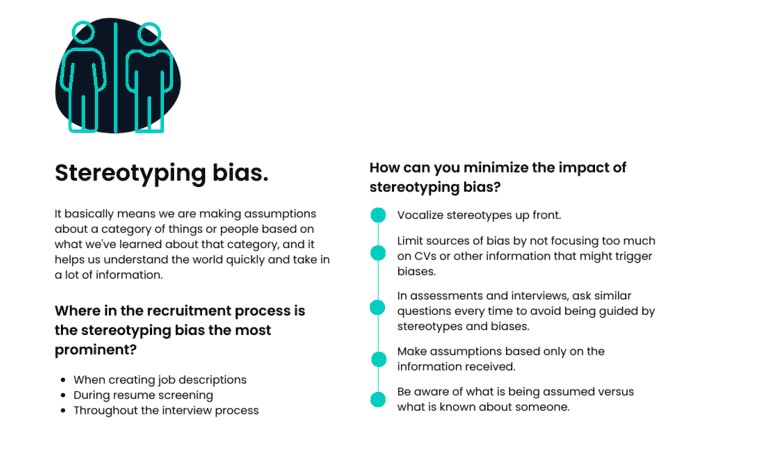Stereotyping: The Simplification of Complex Identities
Stereotyping is a cognitive bias that involves forming generalizations or assumptions about individuals or groups based on certain characteristics, such as their race, gender, age, or occupation. Stereotypes can lead to unfair judgments and biases.
Examples of Stereotyping:
Gender Stereotypes: Assuming that individuals of a particular gender are more suited for certain professions, like associating nursing with women and engineering with men.
Racial Stereotypes: Making assumptions about the intelligence, behavior, or characteristics of individuals based on their racial or ethnic background.
Age Stereotypes: Believing that all elderly individuals are frail or all young people are tech-savvy.
Stereotyping in Action:
Imagine a situation in a workplace where a new employee, Alex, joins the team. Despite being a highly skilled and experienced professional, some of Alex’s coworkers stereotype them because of their age. They assume that Alex, being younger, may not have the necessary experience or maturity for the role, even though the facts say otherwise.
Solutions to Address Stereotyping:
Awareness: Encourage individuals to be aware of their own biases and preconceptions. Recognizing when stereotyping is happening is the first step in mitigating it.
Individual Assessment: Teach people to evaluate individuals on their unique merits and qualities rather than making assumptions based on generalizations.
Cultural Competence: Promote cultural competence and sensitivity to recognize and respect the diversity of people’s backgrounds and experiences.
Challenge Stereotypes: Encourage individuals to actively challenge and question stereotypes when they encounter them, both within themselves and in others.
In conclusion, Stereotyping is a cognitive bias that involves forming generalizations about individuals or groups based on certain characteristics. To address this bias, it is important to raise awareness, assess individuals based on their unique qualities, foster cultural competence, and actively challenge stereotypes. By doing so, we can reduce the impact of this bias and promote fair and respectful judgments.
